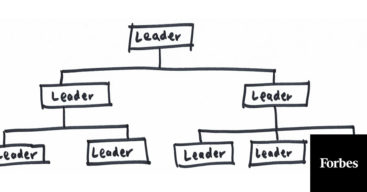Originally published July 2, 2015 on Harvard Business Review
by Doug Sundheim
Your team has identified an important goal to hit, challenge to be addressed, or opportunity to be pursued. You call a meeting or two, set objectives, put a plan together, and start to execute. Everything looks good on paper.
But then your plan starts to hit some snags. Certain objectives are harder to meet than you had hoped. Critical players get pulled onto another project. Timelines take longer than you had anticipated. The impact is smaller than you need it to be.
At this point you can either (1) keep muddling through with your fingers crossed, hoping that things get better (2) abandon the plan altogether or (3) recalibrate and jump back in. In my experience, number one never works, and number two doesn’t help in the long run. Only number three can drive the growth of your team and company over the long term. This is where debriefing, a simple and powerful tool, comes in.
Debriefing is a structured learning process designed to continuously evolve plans while they’re being executed. It originated in the military as a way to learn quickly in rapidly changing situations and to address mistakes or changes on the field. In business, debriefing has been widely documented as critical to accelerating projects, innovating novel approaches, and hitting difficult objectives. It also brings a team together, strengthens relationships, and fosters team learning. In my experience, teams who debrief regularly are more tight-knit than those who don’t. They communicate more effectively across the board. They are more aligned on values and purpose. In essence, they become higher performing teams.
So what does a debriefing look like? More than a casual conversation to discuss what did and didn’t go well, debriefing digs into why things happened and explores implications for the future. Accurate understanding and knowledge is placed ahead of egos. People participate with a desire to truly understand root causes of their successes and failures so they know what to repeat and what to change. The conversations may be uncomfortable, but participants realize that the discomfort of getting things out on the table is minimal compared to the pain of making the same mistakes again.
When and how often you want to hold debriefings depends on the nature of your work. In 2011, when the NY Giants won the Super Bowl, they held debriefings 1-2 days after every game to understand what did and didn’t work. Many software development teams hold mini-debriefs every morning to review yesterday’s progress and today’s goals—and longer debriefs every month or two to understand larger project wins and challenges. As a general rule, I tell teams to start with one debriefing a week to figure out what works best for them. You also may want to hold one after significant events or project milestones. Too many or too few can both diminish the value of debriefing, so you have to discuss appropriate frequency with your team.
A productive debriefing can last for as little as 10 minutes or as long as several hours, depending on the size and scope of the project or event that’s being debriefed. I’ve found 30-60 minutes is optimal for most debriefing meetings. Here are four steps to conduct an effective debriefing:
1. Schedule a regular time and place.
The key here is to make the debriefing expected, so everyone adopts a learning mindset before the activity at the center of the debriefing even takes place. When people know they’re going to be getting together afterward, and can anticipate the general structure of the conversation, they’ll begin gathering insights in advance. Eventually, the more you debrief, the more effective and efficient the whole process becomes.
2. Create a learning environment.
Expectations should be set so people know that learning is what’s most important — not one’s position on the org chart. The expression the Army uses is: leave your stripes at the door. The most senior leaders in the room set the tone. When they make themselves vulnerable and admit to errors, it gives everyone else permission to do so too. Along with this, the other key aspect of creating a learning environment is no pointing fingers. The results, both good and bad, should be considered team results, recognizing that everyone had a hand in creating them.
3. Review four key questions.
This is the heart of a good debriefing. Ask all participants come to the meeting with thoughts prepared on these questions:
What were we trying to accomplish? Every debriefing should start by restating the objectives you were trying to hit. The group should have agreed on clear objectives prior to taking action in the first place. If there’s lack of clarity here, the rest of the debriefing will be of little value because you won’t know how to judge your success.
Teams often struggle to set clear objectives if the initiative is at a conceptual phase. Push yourself to set these early on to pave the way for your team’s learning and rapid improvement.
Where did we hit (or miss) our objectives? With clear objectives, this is a pretty straightforward conversation as you either did or didn’t hit them. Review your results, and ensure the group is aligned.
What caused our results? This is the root-cause analysis and should go deeper than obvious, first-level answers. For example, if you were trying to generate fifteen wins and only generated five, don’t be satisfied with answers like we didn’t try hard enough. Keep digging and ask why you didn’t try hard enough.
For example, were you overwhelmed because the team hadn’t prioritized work? Were incentives misguided so people didn’t feel motivated to try harder? Was the task too complex so people gave up too easily? There are many reasons why people don’t try hard enough. If you don’t get to the root cause, you can’t create actionable learning for the future.
An effective tool for root-cause analysis is “5 whys.” For every answer you give, ask why that’s the case. By the time you answer the question five times, you’ve usually uncovered some fundamental issues that are holding you back.
What should we start, stop, or continue doing? Given the root causes uncovered, what does that mean for behavior or plan changes? Specifically, what should we do next now that we know what we know?
4. Codify lessons learned.
Make sure you capture lessons learned in a useable format for later reference/use. At a minimum this is taking notes and distributing them to the members present. Other methods can make the information more readily available to a broader audience. For example at Procter and Gamble, R&D professionals submit Smart Learning Reports (SLRs) to a database, based on monthly research lessons learned, that can be searched by anyone in R&D worldwide.
The biggest hurdle to debriefing is merely starting it, especially if you have a culture where this sort of open communication isn’t the norm. If that’s the case, pick some small projects and an intimate team to pilot the process. Once you begin to do it, you quickly realize how natural and intuitive it is. We experimented with some stuff, we talked about what worked and what didn’t, and then we used that learning to get smarter about our next set of experiments etc. That wasn’t so hard.
The most powerful change processes are usually the simplest.
This article was originally published July 2, 2015 on Harvard Business Review



